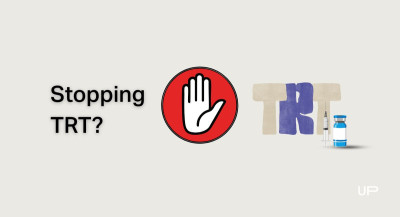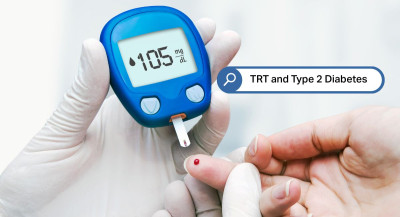Optimizing Testosterone Injection Frequency: What Science Says


For men using testosterone replacement therapy (TRT) in Canada, one of the most common questions after starting treatment is: how often should I inject?

That’s because testosterone levels don’t remain steady; they rise after an injection, then gradually fall. This can lead to peaks and crashes that affect mood, energy, libido, and overall well-being.
In online forums and medical clinics alike, discussions about injection timing are common. Some men feel great for a few days, then experience fatigue or irritability as levels decline. Others are concerned about long-term side effects from inconsistent dosing.
The good news? Optimizing injection frequency isn’t just possible; it’s backed by clinical research.
This article explores how injection schedules work, what science says about weekly, biweekly, and more frequent dosing, and how to find the right rhythm for your body.
Topics covered in this article:
How Testosterone Cypionate & Enanthate Work
Understanding the pharmacokinetics of testosterone esters helps explain why injection frequency matters. Esters like cypionate and enanthate act as prodrugs.

They are inactive until enzymes cleave off the ester chain, releasing active testosterone. Their absorption, release rates, and duration in the body are shaped by their chemical properties and depot effects in muscle tissue.
Key points:
- Half-life basics: Intramuscular testosterone cypionate has an estimated half-life of about 7–8 days. Enanthate shows a half-life in the ballpark of 7–9 days in many reports. Some pharmacokinetic modelling suggests effective “functional half-lives” might be shorter (e.g. ~4 days) depending on individual clearance rates.
- Depot and release mechanics: After injection, the esterified testosterone remains in the oily depot in muscle tissue and diffuses slowly into circulation. The longer the ester chain, the more lipophilic the molecule, slowing its release. Because of this depot mechanism, cypionate and enanthate both release testosterone over days to weeks rather than hours.
- Serum level behaviour (peaks & troughs): After a 200–250 mg injection of enanthate or cypionate, serum testosterone often peaks to supraphysiologic levels within 24–48 hours, then gradually declines toward the lower reference range over the next one to two weeks. This pharmacokinetic profile can lead to fluctuations, highs shortly post-injection and lows before the next dose, which may correlate with symptoms like mood swings, energy dips, or libido changes.
Because cypionate and enanthate have fairly similar pharmacokinetic behaviour, many clinicians consider them functionally interchangeable in TRT protocols.
Weekly vs Biweekly Injections: What Studies Show
Clinical research comparing weekly and biweekly testosterone injections shows that injection frequency has a measurable effect on hormone stability and symptoms. Both testosterone cypionate and enanthate were originally labelled for administration every two to three weeks, but newer evidence suggests shorter intervals often provide more consistent results.
Key findings:
- Stability of serum testosterone levels: Studies published in The Journal of Clinical Endocrinology & Metabolism and The Aging Male have shown that biweekly injections (every 14 days) can produce high peaks shortly after injection and low troughs before the next dose. This fluctuation may lead to mood changes, fatigue, or reduced libido for some men.
- Weekly injections improve steadiness: Weekly dosing results in smaller peaks and less dramatic declines, maintaining testosterone levels closer to the normal physiological range throughout the week. This can translate into steadier mood, energy, and sexual function.
- Side effect management: Reducing the gap between doses can also lower the risk of certain side effects tied to high peaks, such as acne or increased hematocrit. This is why many endocrinologists and urologists now recommend weekly injections over the traditional biweekly schedule, especially for men experiencing “crash” symptoms before their next shot.
While weekly dosing is not mandatory for every patient, the evidence points to improved hormone stability and symptom control when injections are spaced closer together. Individual needs vary, so lab testing and symptom tracking remain essential for fine-tuning a protocol.
More Frequent Injections (2x/week or EOD)
Some men on testosterone replacement therapy (TRT) in Canada find that weekly injections still lead to symptoms before the next dose. For these individuals, injecting more frequently—such as every 3.5 days (twice a week) or even every other day (EOD)—may offer a smoother hormonal experience.

Who may benefit from increased frequency:
- Men who feel a noticeable dip in mood, energy, or libido before their next injection
- Those prone to side effects from peak testosterone levels (e.g. acne, fluid retention)
- Men with faster metabolism of testosterone esters or high variability in lab levels
Potential benefits:
- Improved symptom control: Smaller, more frequent doses can help avoid peaks and troughs
- Lower side effect risk: Frequent dosing tends to reduce estrogen conversion and hematocrit spikes
- Better mood and mental clarity: Some men report improved focus and emotional stability
Possible drawbacks:
- More injections: This requires a higher commitment and greater comfort with self-injection
- Increased logistics: Travel and scheduling may become more complex with EOD or twice-weekly regimens
What experts recommend:
Endocrinologists typically tailor injection frequency to individual needs, symptoms, and lab results. While weekly injections are a common starting point, more frequent dosing is increasingly accepted in clinical practice—especially when patients struggle with hormonal fluctuations.
The goal is not to follow a universal schedule, but to maintain testosterone levels in a healthy, stable range while minimizing adverse effects.
How to Know If Your Frequency Is Right
There’s no one-size-fits-all schedule when it comes to testosterone injections. The best injection frequency depends on how your body absorbs and responds to the medication, as well as how stable your hormone levels remain over time.
Here are the main factors doctors monitor to determine if your injection timing is working:
- Symptom control: Are your symptoms improving and staying stable between injections? A return of fatigue, low mood, or low libido before your next dose may indicate your levels are dipping too soon.
- Serum testosterone levels: Blood tests taken at trough (the day before your next injection) and peak (24–48 hours after injection) can reveal how much your testosterone fluctuates.
- Side effects: If you experience mood swings, acne, or elevated hematocrit, it may be due to peaks and crashes in your levels, suggesting your dosing schedule might need adjustment.
- Overall health: Your age, weight, activity level, and other medications can all influence how quickly your body metabolizes testosterone.
Your doctor may suggest adjusting frequency if you're injecting every two weeks and experiencing hormonal ups and downs. Many men do better on weekly injections or even twice-weekly, depending on lab results and how they feel.
Ultimately, the right schedule is the one that keeps your testosterone within a healthy range, minimizes side effects, and supports consistent well-being. Regular follow-ups and bloodwork are key.
UPGUYS Approach to Injection Protocols
At UPGUYS, testosterone replacement therapy (TRT) is never one-size-fits-all. We work with licensed Canadian doctors who tailor each injection protocol based on your lab results, symptoms, and health goals. Whether you’re new to TRT or refining your current routine, your treatment plan is always supervised by a qualified medical team.

What you can expect:
- Personalized protocols: Your doctor will determine the appropriate injection schedule—weekly, biweekly, or otherwise—based on your testosterone levels and how you’re feeling.
- Ongoing monitoring: We support regular follow-ups, including lab testing and check-ins, to ensure your hormone levels stay within the desired range.
- Safe adjustments: If your symptoms change or side effects arise, your doctor can adjust your injection frequency or dosage to better suit your needs.
Our goal is to make testosterone therapy both accessible and safe for men in Canada—with clarity, consistency, and medical oversight at every step.
Conclusion: The Right Frequency Is Personal, Not One-Size-Fits-All
When it comes to testosterone replacement therapy (TRT) in Canada, injection frequency plays a key role in how well treatment works and how stable you feel. Weekly or more frequent injections may help minimize hormonal swings, while biweekly dosing could be sufficient for others.
There’s no perfect schedule for everyone—just the one that keeps your testosterone levels steady and your symptoms under control. With proper monitoring, lab work, and doctor support, you can find the rhythm that works best for your body and lifestyle.
References
UPGUYS has strict sourcing guidelines to ensure our content is accurate and current. We rely on peer-reviewed studies, academic research institutions, and medical associations. We strive to use primary sources and refrain from using tertiary references.- TESTOSTERONE CYPIONATE- testosterone cypionate injection, solution, Pfizer,
https://labeling.pfizer.com/ShowLabeling.aspx?id=4015 - Testosterone enanthate, DrugBank,
https://go.drugbank.com/drugs/DB13944 - Population Pharmacokinetic/Pharmacodynamic Modeling of Depot Testosterone Cypionate in Healthy Male Subjects, PubMed,
https://pubmed.ncbi.nlm.nih.gov/29436172/ - Testosterone Enantate, Science Direct,
https://www.sciencedirect.com/topics/medicine-and-dentistry/testosterone-enantate - Testosterone Enantate: Vecuronium bromide, Science Direct,
https://www.sciencedirect.com/topics/pharmacology-toxicology-and-pharmaceutical-science/testosterone-enantate
This article is written for informational purposes only and does not constitute medical advice. The information provided in the articles cannot and should not replace advice from a healthcare professional. Talk to your healthcare provider about any physical or mental health concerns or the risks and benefits of any treatment or medication.





